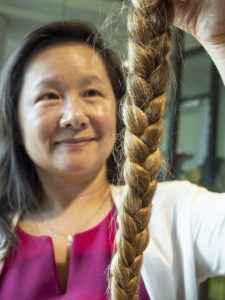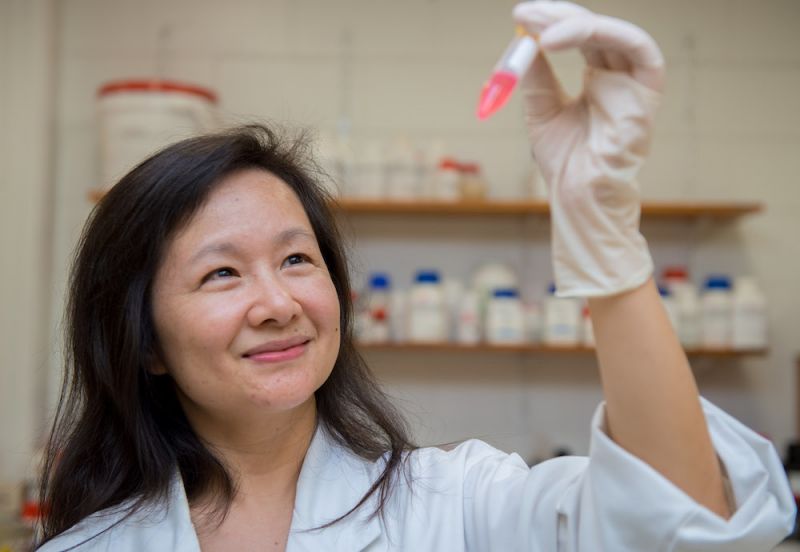Turning hair into water sensors
Published on by Water Network Research, Official research team of The Water Network in Academic
Griffith University researchers have used human hair waste to develop sustainable organic hi-tech devices for water quality testing of contaminants.

Griffith University researchers have used human hair waste to develop sustainable organic hi-tech devices for water quality testing of contaminants.
Professor Qin Li and a team of researchers from the School of Engineering and Built Environment and Queensland University of Technology synthesised carbon dots from human hair waste which can detect trace amounts of chloroform in water, a major by-product of water disinfection.
Published in Sustainable Materials and Technology, the researchers created highly fluorescent carbon dots CDs in a sustainable chemical-free process by heating up the hair at 180 ºC in an oxygen-deficient environment.
Carbon dots are small carbon nanoparticles (less than 10nm in size) with varying functional groups on the surface and the ability to fluoresce when exposed to a range of chemical and biochemical contaminants.
The intensity of the fluorescence changes when surface functional groups on the carbon dot interact with the particular chemical species, making them perfect for chemical sensor applications.
 Professor Li said the contaminants the carbon dots target could be as unique as the individual whose hair from which they are made.
Professor Li said the contaminants the carbon dots target could be as unique as the individual whose hair from which they are made.
“It might sound strange, but hair is an extremely valuable waste product,” Professor Li said.
“Being rich in protein and full of carbon and nitrogen, it is an excellent precursor for transformation into useful materials like carbon dots.
“Because hair is rich in nitrogen, when we altered the thermal treatment conditions, we produce carbon dots with different nitrogen-containing functional groups on their surface which bind specific contaminants.”
Remarkably the researchers also found that different coloured hair produced carbon dots that responded preferentially to differing pollutants.
“The dark hair showed a high specificity for sensing chloroform pollution in water, while the blond hair we tested was more sensitivity to metal species like magnesium,” said former Griffith University Research Fellow Dr Ehsan Eftekhari.
These dark hair-derived carbon dots, with nitrogen-based sensing antennae on the surface, were so sensitivity they could detect chloroform present in as few as three molecules per billion water molecules.
“Chlorination is a widely-adopted disinfection method in water treatment used to reduce pathogen risks and waterborne diseases, but it also creates by-products that have been linked to higher cancer rates, rates,” said Professor Fred Leusch, a co-author who chairs the Australian Water Quality Advisory Committee.
“So, developing sensors to monitor the amount of chlorine used in treatment and the by-product concentrations in real-time is of critical importance to public health.”
The carbon dot sensors could even tell the difference between very similar chemical contaminants.
“In this study, we found the nitrogen-based sensing antennae on the carbon dots surface was sensitive to chloroform, but not to the chemically similar contaminant bromoform, due to the subtle difference in their electronic structures,” Professor Li said.

Attached link
http://www.youtube.com/embed/Bxfj8FpRvz4Taxonomy
- Testing Instruments
- Contaminant Removal
- Test & Measurement
- Sensors
- Testing Kit